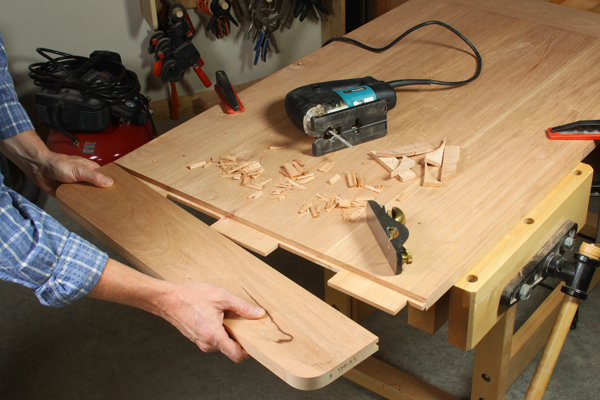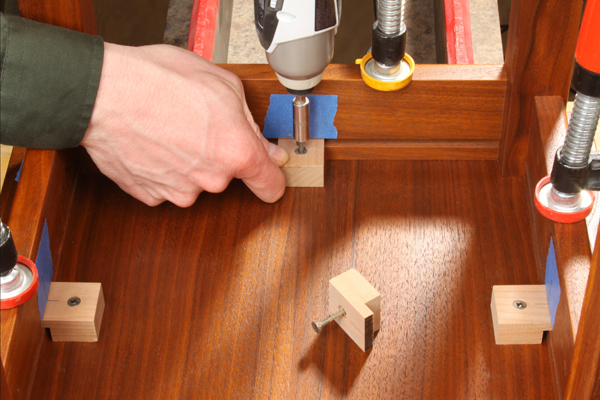
I took the siding off of an old house that is approximately 110 years old. The 1×6 siding boards had several coats of paint on them. I planed them down until the paint was gone and I had about 3/8-in. of thickness left. I made a frame and laid the wood in a groove, glued and nailed the boards and rabbeted the edge. I varnished the table, and it looked great. Then I took it in the house to use in our dining room, and after a good while the boards started shrinking a lot … so much that they began to split apart. What did I do wrong? – Jimmy Warren
Tim Inman: Quick answer: The wood was wet. Longer answer: You don’t say how long the interval was between harvesting and surfacing the old siding and when it was repurposed into the tabletop. My guess is that it wasn’t very long. Wood put to work outdoors lives a pretty tough life. It gets wet every time it rains, and the dampness is reinforced every night when the dew collects on cold surfaces. Then, during the day, it enjoys a sauna-spa treatment when the sun shines on it. So, it is usually pretty “wet” by cabinet wood standards. Once brought inside and surfaced, a good rule of thumb to follow for drying to cabinet standards is to allow one year per one inch of thickness to dry the wood down and achieve that all-important quality: Equilibrium Moisture Content. EMC is the key. The moisture in the wood must, MUST, be at equilibrium with the moisture in the air surrounding it in its intended environment in order to guarantee dimensional stability and not crack.
Or, put another way, the wood needs to cure out indoors, or it will shrink and crack. Applying varnish will not stop the moisture from exchanging. It will slow it down – which is why it took a “good while” before the shrinkage and damage started to show.
That’s my best guess as to “what went wrong.”
Chris Marshall: Following on Tim’s heels, your tabletop probably would have fared fine if you hadn’t glued and nailed the boards in place. As they dried, they could have shrunk freely, but instead they were locked down. One way or the other, those boards were going to shrink widthwise, so when they did, the fibers gave way and cracked. Now, if you hadn’t glued and nailed them (or had skipped the glue at least and nailed them in the centers only), gaps would have appeared between the boards as they proceeded to get narrower, which would look inappropriate on all but the most rustic of tabletops – and I’m guessing you didn’t want that to happen. But, unfortunately, here’s a hard lesson learned. Indoor furniture requires truly dry wood – and as Tim points out, dry to EMC. Even then, we need to account for cross-grain wood movement, because there is absolutely no way to halt it. It is the nature of this wonderful beast.






